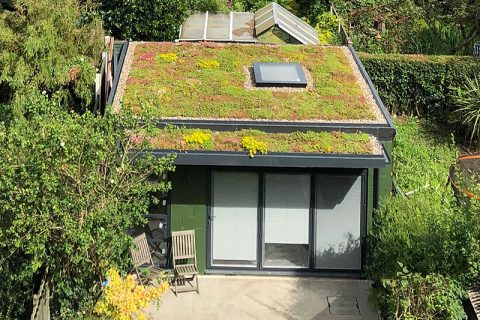
A 15-year blueprint for more than 20,000 new homes, 25,000 extra jobs and infrastructure across South Gloucestershire has been published.
The draft Local Plan includes a huge expansion of Bristol’s “urban edge” onto swathes of countryside to the east of the city, including green belt land.
But a proposed 3,000-home garden village at Buckover, near Thornbury, has been removed from the masterplan and now seems dead in the water.
South Gloucestershire Council’s Cabinet approved the ‘Phase 3 Draft’ Local Plan, which sets out the strategies to build homes and sustainable communities from 2025 to 2040 and forms the basis to decide planning applications, at its meeting on Monday 13th November 2023.
It will now go out to nine weeks’ public consultation before being further refined and submitted to a government planning inspector for public examination.
The council says 20,490 homes are needed in the district, of which 11,230 already have planning permission, leaving the authority to find land for the remaining 9,260.
But the Lib Dem/Labour coalition has taken a very different approach to allocating those than the previous Conservative administration.
Only 1,540 new homes will be built on “brownfield” sites in existing urban areas and market towns, including Lyde Green, Warmley, Yate town centre, Ladden Garden Village and Hanham.
But about 7,500 are for “greenfield” locations, with the bulk of these – 5,740 – earmarked for Bristol’s urban expansion, largely in the East Fringe where the authority also aims to create more employment spaces to “address the imbalance” with jobs-heavy areas such as Severnside and the former Filton Airfield and reduce car reliance and green belt commutes.
A total of 1,765 homes will also be built through smaller schemes on greenfield sites in rural communities, with 775 homes at Charfield by far the biggest.
The council’s strategy avoids large-scale building projects that create entirely new “freestanding communities” in the countryside, although Shortwood, between Mangotsfield and Pucklechurch, will expand massively.
Policies in the plan include providing space for renewable energy generation, supporting the authority’s commitment to net zero, such as by safeguarding areas for wind turbines, finding much-needed pitches for Gypsies, Travellers and Travelling Showpeople, maximising affordable homes and bolstering the economy and town centres.
Key viewpoints and hillsides will be protected through a “blue and Green Infrastructure (GI) network” with nine new GI corridors that leave more space for nature.
The plan states:
“At least 7,420 new homes will need to be on greenfield land that is beyond the urban area and market towns, some of which is currently designated green belt.
“We know this will be very challenging for those communities affected by this.
“We fully understand that where homes and jobs are delivered this will result in change for many communities.
“However, there is no preferred strategy that can avoid this.”
It adds that technical work explored avoiding any loss of greenbelt but found this would “likely cause overloading of villages, settlements and locations with poor infrastructure, and significant growth in places with relatively poor services, facilities and opportunities for sustainable travel”.
The blueprint states that this approach would have required bigger developments in Thornbury, Yate and Chipping Sodbury, almost double the number of allocated new homes in Charfield, significant growth at Falfield, huge changes to the character of villages and the creation of Buckover Garden Village.
It adds that this would require a “substantially different type of transport strategy” with a major upgrade to the M5 Junction 14 and a reliance on longer travel journeys.
“The delivery of a high quality and frequent public transport service as well as alternative active travel routes would have been challenging to deliver and secure in the long term.”
“The promotions at Buckover and Falfield are not currently featured as part of the emerging preferred strategy.”
According to the plan, protecting the green belt would “result in a level of growth that is considered not proportionate in Acton Turville, Cromhall, Rangeworthy, Tytherginton and Wickwar”.
“In some of these places there has been a large amount of speculative growth already, but there has not been an enhancement to existing services and facilities, and public transport services in all but Acton Turville have significantly declined in recent years.”
“This level of growth in some rural communities would overwhelm existing services and facilities whilst not being of scale to fund or support new provision for new services and facilities, such as a new primary school, local shop or viable public transport service.”
The plan explains that primary school places were a key consideration in deciding whether some villages were appropriate for development, including Alveston, Olveston, Cromhall, Rangeworthy, Hawksbury Upton and Acton Turville.
It adds that the consultation will include multiple potential housing sites in some of these communities where only one was required, so it was important the public provided feedback on which should go forward.
“In some cases, the absence of any primary school provision and unsuitable walking and cycling or public transport access has meant no homes are considered proportionate or sustainable.”
“This is the case at Hallen, Tytherington and Tockington.”
The consultation does not include the 11,230 homes on sites with planning consent which were included in previous versions of the Local Plan (known as the Core Strategy, adopted in 2013).
The housing allocations also do not include some areas expected for regeneration, such as the former Filton Airfield where developers YTL have submitted plans for more homes, the University of the West of England’s Frenchay campus, Kingswood and Yate town centres, and the area around Bristol Parkway railway station because of uncertainty over how soon that would happen.
South Gloucestershire Council Cabinet member with responsibility for planning, Cllr Chris Willmore (Lib Dem, Yate North), said:
“The plans set out how we could become a net zero area, tackle the problems of lack of facilities on new developments, protect biodiversity and our town centres and address key housing and employment issues.”
“This plan focuses on tackling the local impacts of the national housing crisis.”
“It provides genuinely affordable homes, to rent or buy, in the places we need them for local people, and makes sure they are decent homes, truly affordable to live in, by being warm and energy efficient.”
“It will see far more of the houses being built as social housing than ever before.”
“And it will tackle the problems of jobs being in the wrong places, leaving people with costly daily commutes to work.”
“We also want to make it crystal clear to developers that the infrastructure we need – schools, healthcare, transport links and places and spaces for local jobs – must be delivered alongside new housing, not years later, as has too often happened in the past.”
“It’s easy to make pie-in-the-sky promises of massive new facilities, but this draft is grounded in reality.”
“We have been adamant that we will not allocate any land for housing unless there is a clear plan to fund the infrastructure needed.”
“Through the consultation process, our ask of residents is to let us know whether you think our preferred strategy is the best option, and how we can do the best we can.”
The public consultation will launch on Monday 4th December 2023.
The final plan is not expected to be adopted by the council until September 2025.
✍ Article by Adam Postans, Local Democracy Reporting Service (LDRS).
More information: Agenda and reports for the Cabinet meeting on 13th November 2023 (Item 12 refers) (SGC)
Technical correction
The following technical correction was published ahead of the Cabinet meeting on 13th November 2023:
Since publishing the Cabinet papers on 3rd November, a technical error at Chapter 3a has been identified relating to how the Local Plan explains how many new homes are needed in South Gloucestershire.
Paragraph 3a.15 at page 18 of Appendix A: The Local Plan Phase 3: Towards An Emerging Spatial Strategy, currently states the existing commitments figure as 11,230.
This figure should be reduced by 393 to 10,837 to address the double counting of Site 4 EF006 Lyde Green Farm as presented in Chapter 4 Urban Area and Market Towns at page 49.
As a result, the number of homes we need to plan for is increased from 9,260 to 9,653 and the number of homes to be provided on new greenfield allocations as a sub-component of this is increased from 7,420 to 7,813.
Liberal Democrat statement
UPDATE added 16th November 2023.
Statement issued by the Liberal Democrat group:
The Liberal Democrat and Labour partnership which runs South Gloucestershire council presented the new draft local plan at Cabinet on 13th November 2023. The plan sets out the housing needs for the district over the next 15 years.
There have already been two failed attempts at establishing a local plan. This has left the area open to speculative developments therefore the partnership made this one of their top priorities upon taking control at the council in May.
Cllr Chris Wilmore – Cabinet Member responsible for Planning and Infrastructure presented the plan:
“This Plan needs to be robust so that we don’t suffer the same consequences as the previous plans – that was like playing Snakes and Ladders – you get to the top of the board and hit the big snake and end up back at the beginning – that just leaves us at the mercy of the development industry. We must stop the scourge of speculative developments which has plagued South Gloucestershire especially the areas around Thornbury, Chipping Sodbury and Charfield – with developments built without adequate infrastructure – schools, health and roads.”
Leader of the council, Cllr Claire Young, said
“We’ve set out how our emerging Preferred Strategy addresses this administration’s priorities of tackling the climate and nature emergency and reducing inequalities.”
“I’m really proud of what we’ve been able to achieve with a commitment to creating genuinely affordable housing, addressing the severe shortage of suitable housing for our young people and making sure people have homes they can afford to heat. Alongside that we are setting South Gloucestershire on a strong path towards net zero in carbon emissions.”






Mass immigration,legal and illegal is causing the housing and infrastructure emergency.Return these people and we will have enough houses.
Also,there is no climate emergency